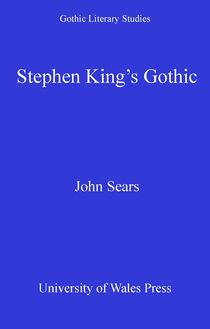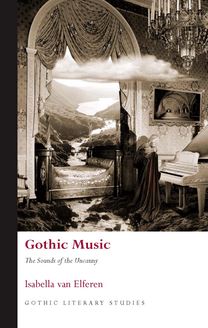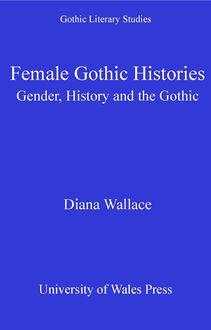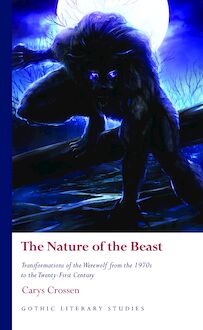-
 Univers
Univers
-
 Ebooks
Ebooks
-
 Livres audio
Livres audio
-
 Presse
Presse
-
 Podcasts
Podcasts
-
 BD
BD
-
 Documents
Documents
-
- Cours
- Révisions
- Ressources pédagogiques
- Sciences de l’éducation
- Manuels scolaires
- Langues
- Travaux de classe
- Annales de BEP
- Etudes supérieures
- Maternelle et primaire
- Fiches de lecture
- Orientation scolaire
- Méthodologie
- Corrigés de devoir
- Annales d’examens et concours
- Annales du bac
- Annales du brevet
- Rapports de stage
La lecture à portée de main
Vous pourrez modifier la taille du texte de cet ouvrage
Découvre YouScribe en t'inscrivant gratuitement
Je m'inscrisDécouvre YouScribe en t'inscrivant gratuitement
Je m'inscrisEn savoir plus
Vous pourrez modifier la taille du texte de cet ouvrage
En savoir plus

Description
This book is the first attempt to theorise South Asian Gothic production as a common cultural landscape, taking into account both the historical perspective and the variety of media texts. The volume consists of fifteen chapters by experts in film, literature and cultural studies of South Asia, representing the diversity of the region and a number of ways in which Gothic manifests in contemporary South Asian cultures. Gothic in South Asia can be read as a distinctive aesthetic, narrative practice, or a process of signification, where conventional Gothic tropes and imagery are assessed anew and global forms are consumed, appropriated, translated, transformed or resisted. The volume investigates South Asian Gothic as a local variety of international Gothic and part of the transnational category of globalgothic, contributing to the ongoing discussion on the need to de-westernise Gothic methodologies and ensure that Gothic scholarship remains relevant in the culturally-diverse modern world.
List of Illustrations
Notes on Contributors
Introduction - Katarzyna Ancuta and Deimantas Valančiūnas
Part I History, Politics and Trauma
1. Places Stained by Time: The Gothic Poetics of State Terror in Dhrubajyoti Bora’s Kalantor Trilogy - Amit R. Baishya
2. Home Is Where the Horror Is: Pakistani Films and Historical Trauma - Kamayani Sharma
3. The Past and the Present: A Reading of Bhooter Bhabishyat - Nishi Pulugurtha
Part II Colonialism, Postcolonialism and Diaspora
4. Search and Subterfuge: The Haunting of the Bengali Bhadralok in Tagore’s ‘The Hungry Stones - Prasanta Bhattacharyya
5. Tracing Terror and the Uncanny in the Gothic Urdu Fiction of Hijab Imtiaz Ali - Shweta Sachdeva Jha
6. Rebecca in India: The Appropriation of European Gothic in Indian Cinema - Deimantas Valančiūnas
7. ‘Khamosh! . . . The Kaptan is going to speak’: Gothic Conventions and Diaspora in Amitav Ghosh’s Sea of Poppies - Shilpa Daithota Bhat
Part III. Spirits, Rituals and Folklore
8. Mysteries in the Air: Modern Bhutan and the Cultural Representations of the Supernatural - Runa Chakraborty Paunksnis
9. No Place for Trespassers: Notes Toward a Himalayan Anthropology of Fright - Davide Torri
10. Monsters of Every Stripe: Navigating the Werebeasts of Indian Horror Cinema - Sarah A. Joshi
11. The Tantric as Gothic Villain: Kapalikas and Aghoris in Medieval and Contemporary Indian Literature - Ira Sarma
Part IV Gothic Media
12. The Making of a Monster: Evil in Hindi Comics - Aditi Sen
13. ‘But Are They All Horrid?’ On the Intermittent Use of the Gothic in Hindi Horror Cinema - Valentina Vitali
14. Detecting Ghosts: Anjaan: Special Crimes Unit as Global Gothic Television - Katarzyna Ancuta
15. ‘Bhoot FM’ and the Gothic Tradition in Bangladesh - Muhammed Shahriar Haque
Index
Sujets
Informations
| Publié par | University of Wales Press |
| Date de parution | 15 novembre 2021 |
| Nombre de lectures | 0 |
| EAN13 | 9781786838025 |
| Langue | English |
Informations légales : prix de location à la page 0,4400€. Cette information est donnée uniquement à titre indicatif conformément à la législation en vigueur.
Extrait
SOUTH ASIAN GOTHIC
SERIES PREFACE
Gothic Literary Studies is dedicated to publishing groundbreaking scholarship on Gothic in literature and film. The Gothic, which has been subjected to a variety of critical and theoretical approaches, is a form which plays an important role in our understanding of literary, intellectual and cultural histories. The series seeks to promote challenging and innovative approaches to Gothic which question any aspect of the Gothic tradition or perceived critical orthodoxy. Volumes in the series explore how issues such as gender, religion, nation and sexuality have shaped our view of the Gothic tradition. Both academically rigorous and informed by the latest developments in critical theory, the series provides an important focus for scholarly developments in Gothic studies, literary studies, cultural studies and critical theory. The series will be of interest to students of all levels and to scholars and teachers of the Gothic and literary and cultural histories.
SERIES EDITORS
Andrew Smith, University of Sheffield
Benjamin F. Fisher, University of Mississippi
EDITORIAL BOARD
Kent Ljungquist, Worcester Polytechnic Institute Massachusetts
Richard Fusco, St Joseph’s University, Philadelphia
David Punter, University of Bristol
Chris Baldick, University of London
Angela Wright, University of Sheffield
Jerrold E. Hogle, University of Arizona
For all titles in the Gothic Literary Studies series visit www.uwp.co.uk
South Asian Gothic
Haunted cultures, histories and media
edited by
Katarzyna Ancuta and Deimantas Valančiūnas
© The Contributors, 2021
All rights reserved. No part of this book may be reproduced in any material form (including photocopying or storing it in any medium by electronic means and whether or not transiently or incidentally to some other use of this publication) without the written permission of the copyright owner. Applications for the copyright owner’s written permission to reproduce any part of this publication should be addressed to the University of Wales Press, University Registry, King Edward VII Avenue, Cardiff CF10 3NS.
www.uwp.co.uk
British Library Cataloguing-in-Publication Data
A catalogue record for this book is available from the British Library.
ISBN 978-1-78683-800-1
e-ISBN 978-1-78683-802-5
The right of the contributors to be identified as authors of this work has been asserted by them in accordance with sections 77 and 79 of the Copyright, Designs and Patents Act 1988.
C ONTENTS
List of Illustrations
Notes on Contributors
Introduction Katarzyna Ancuta and Deimantas Valančiūnas
Part I History, Politics and Trauma
1 Places Stained by Time: The Gothic Poetics of State Terror in Dhrubajyoti Bora’s Kalantor Trilogy Amit R. Baishya
2 Home Is Where the Horror Is: Pakistani Films and Historical Trauma Kamayani Sharma
3 The Past and the Present: A Reading of Bhooter Bhabishyat Nishi Pulugurtha
Part II Colonialism, Postcolonialism and Diaspora
4 Search and Subterfuge: The Haunting of the Bengali Bhadralok in Tagore’s ‘The Hungry Stones’ Prasanta Bhattacharyya
5 Tracing Terror and the Uncanny in the Gothic Urdu Fiction of Hijab Imtiaz Ali Shweta Sachdeva Jha
6 Rebecca in India: The Appropriation of European Gothic in Indian Cinema Deimantas Valančiūnas
7 ‘ Khamosh ! . . . The Kaptan is going to speak’: Gothic Conventions and Diaspora in Amitav Ghosh’s Sea of Poppies Shilpa Daithota Bhat
Part III. Spirits, Rituals and Folklore
8 Mysteries in the Air: Modern Bhutan and the Cultural Representations of the Supernatural Runa Chakraborty Paunksnis
9 No Place for Trespassers: Notes Toward a Himalayan Anthropology of Fright Davide Torri
10 Monsters of Every Stripe: Navigating the Werebeasts of Indian Horror Cinema Sarah A. Joshi
11 The Tantric as Gothic Villain: Kapalikas and Aghoris in Medieval and Contemporary Indian Literature Ira Sarma
Part IV Gothic Media
12 The Making of a Monster: Evil in Hindi Comics Aditi Sen
13 ‘But Are They All Horrid?’ On the Intermittent Use of the Gothic in Hindi Horror Cinema Valentina Vitali
14 Detecting Ghosts: Anjaan: Special Crimes Unit as Global Gothic Television Katarzyna Ancuta
15 ‘Bhoot FM’ and the Gothic Tradition in Bangladesh Muhammed Shahriar Haque
Notes
L IST OF I LLUSTRATIONS
Figure 11.1. The Aghori Drdhbhut in the Hindi comic Aghori ( Anthony series, 1999)
Figure 11.2. The Aghori Vira in the Indian English comic series Aghori (book 1, 2012)
Figure 11.3. Splatterpunk in the Indian English comic series Aghori (book 2, 2012)
Figure 13.1. Greimas’ semiotic square (Greimas, 1987, p. 49)
Figure 13.2. Relations of contraries (negation), contradictories (opposition) and implication
Figure 13.3. Application of Greimas’ semiotic square to Hindi horror cinema
Figure 13.4. Screen grab from title sequence of Ghost (Puja Jatinder Bedi, 2012)
N OTES ON C ONTRIBUTORS
Katarzyna Ancuta is a lecturer at the Faculty of Arts, Chulalongkorn University in Bangkok, Thailand. Her research interests oscillate around the interdisciplinary contexts of contemporary Gothic/Horror, currently with a strong Asian focus. Her recent publications include contributions to The Routledge Handbook to the Ghost Story (2017), B-Movie Gothic (2018), Twenty-first-century Gothic (2019) and Gothic and the Arts (2019). She has also co-edited three special journal issues on Thai (2014) and Southeast Asian (2015) horror film, and Tropical Gothic (2019), and a collection Thai Cinema: The Complete Guide (2018).
Amit R. Baishya is Associate Professor in the Department of English at the University of Oklahoma. His monograph Contemporary Literature from Northeast India: Deathworlds, Terror and Survival was published by Routledge in 2018. He is also the co-editor (with Yasmin Saikia) of a collection of essays titled Northeast India: A Place of Relations (Cambridge University Press, 2017) and Postcolonial Animalities (with Suvadip Sinha, Routledge, 2019). He is currently editing two special journal issues on Alterglobal Politics: Postcolonial Theory in the Era of the Anthropocene and the Nonhuman with Priya Kumar and Insides-Outsides: Anglophone Literatures from Northeast India for South Asian Review with Rakhee Kalita Moral.
Shilpa Daithota Bhat , Ph.D., is Assistant Professor at Ahmedabad University, Gujarat, India. Her areas of interest are South Asian literature, diaspora and postcolonial theories, Canadian studies and children’s literature. She has published articles in reputed journals like Social Identities , Green Letters , Culture and Religion , Sikh Formations and Journal of Tourism and Cultural Change . Her book-length publications include Indians in Victorian Children’s Narratives: Animalizing the ‘Native’, 1830–1930 (monograph, 2017); Diaspora and Homing in South Asian Women’s Writing: Beyond Trishanku (edited anthology, 2018); Women Writers of the South Asian Diaspora: Interpreting Gender, Texts and Contexts (co-edited anthology, 2019); and Diasporic Inquiries into South Asian Women’s Narratives: Alien Domiciles (edited anthology, 2020).
Prasanta Bhattacharyya is the Principal of Rabindra Mahavidyalaya, a UG college affiliated to the University of Burdwan, India. He received his Ph.D. for research on the First Wave of English Gothic Literature. He has published over forty-five articles on Gothic, Romantic and postcolonial literature, and is the joint editor of two critical compendiums on Amitav Ghosh and Salman Rushdie published by Orient Blackswan and Cambridge Scholars respectively.
Runa Chakraborty Paunksnis teaches at the faculty of Social Sciences, Arts and Humanities in Kaunas University of Technology, Lithuania. Her research interests include Dalit literature, gender studies, postcolonial theories, and new media. In her published articles and book chapters, she focused on aspects of Dalit women’s writings, caste dynamics in post-Partition Dalit autobiographies and gender representations in New Bollywood films. Runa is also a creative writer and translator.
Muhammed Shahriar Haque , Ph.D., is Executive Director of East West University Centre for Research and Training, and Professor at Department of English, East West University. He has published numerous scholarly articles, and co-edited three books: Prostitution: Women, Society, State and Law (1997), Constructing Identities in the Malaysian Media (2008), English Studies and the Marketplace (2018). He is also editor of the peer-reviewed East West Journal of Humanities , and producer and assistant director of the documentary film Life after Grey (2015). His research interests include critical discourse analysis, film and media studies, teacher education, educational technology, and photojournalism.
Sarah Joshi, Ph.D., is the Director of the Pittsburgh London Film Programme, part of the University of Pittsburgh’s Centre for International Studies, and a Lecturer II in Film and Media Studies. Her doctoral research with the London Consortium was concerned with contemporary Hindi cinema and the negotiation of interracial relationships and cultural citizenship in diasporic-centric films. Sarah’s current research interests focus on two areas of British cinema, specifically urban horror and class. She has published on the Non-Resident Indians, as well as on representations of the Partition of India and Pakistan in popular film and literature.
Nishi Pulugurtha is Associate Professor in the department of English, Brahmananda Keshab Chandra College, Kolkata. Her areas of interest are British Romantic literature, Indian writing in English, the diaspora and Shakespeare adaptations in film. Having published in refereed journals and edited volumes, she has written a monograph on Derozio (2010); a collection of travel essays Out in the Open (2019); an edited volume of essays on travel Across and Beyond (2020); and a volume of poems The Real and The Unreal and Other Poems (2020). She guest edited the February 2021 issue of Caf
-
 Univers
Univers
-
 Ebooks
Ebooks
-
 Livres audio
Livres audio
-
 Presse
Presse
-
 Podcasts
Podcasts
-
 BD
BD
-
 Documents
Documents
-
Jeunesse
-
Littérature
-
Ressources professionnelles
-
Santé et bien-être
-
Savoirs
-
Education
-
Loisirs et hobbies
-
Art, musique et cinéma
-
Actualité et débat de société
-
Jeunesse
-
Littérature
-
Ressources professionnelles
-
Santé et bien-être
-
Savoirs
-
Education
-
Loisirs et hobbies
-
Art, musique et cinéma
-
Actualité et débat de société
-
Actualités
-
Lifestyle
-
Presse jeunesse
-
Presse professionnelle
-
Pratique
-
Presse sportive
-
Presse internationale
-
Culture & Médias
-
Action et Aventures
-
Science-fiction et Fantasy
-
Société
-
Jeunesse
-
Littérature
-
Ressources professionnelles
-
Santé et bien-être
-
Savoirs
-
Education
-
Loisirs et hobbies
-
Art, musique et cinéma
-
Actualité et débat de société
- Cours
- Révisions
- Ressources pédagogiques
- Sciences de l’éducation
- Manuels scolaires
- Langues
- Travaux de classe
- Annales de BEP
- Etudes supérieures
- Maternelle et primaire
- Fiches de lecture
- Orientation scolaire
- Méthodologie
- Corrigés de devoir
- Annales d’examens et concours
- Annales du bac
- Annales du brevet
- Rapports de stage




















